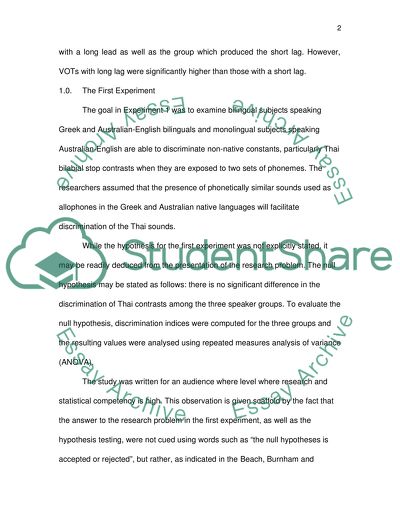Cite this document
(“Bilingualism and the relationship between perception and production Essay - 1”, n.d.)
Bilingualism and the relationship between perception and production Essay - 1. Retrieved from https://studentshare.org/miscellaneous/1577030-bilingualism-and-the-relationship-between-perception-and-production-greekenglish-bilinguals-and-thai-bilabial-stopslingustics-department
Bilingualism and the relationship between perception and production Essay - 1. Retrieved from https://studentshare.org/miscellaneous/1577030-bilingualism-and-the-relationship-between-perception-and-production-greekenglish-bilinguals-and-thai-bilabial-stopslingustics-department
(Bilingualism and the Relationship Between Perception and Production Essay - 1)
Bilingualism and the Relationship Between Perception and Production Essay - 1. https://studentshare.org/miscellaneous/1577030-bilingualism-and-the-relationship-between-perception-and-production-greekenglish-bilinguals-and-thai-bilabial-stopslingustics-department.
Bilingualism and the Relationship Between Perception and Production Essay - 1. https://studentshare.org/miscellaneous/1577030-bilingualism-and-the-relationship-between-perception-and-production-greekenglish-bilinguals-and-thai-bilabial-stopslingustics-department.
“Bilingualism and the Relationship Between Perception and Production Essay - 1”, n.d. https://studentshare.org/miscellaneous/1577030-bilingualism-and-the-relationship-between-perception-and-production-greekenglish-bilinguals-and-thai-bilabial-stopslingustics-department.


